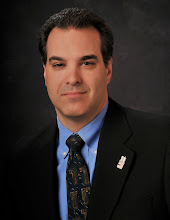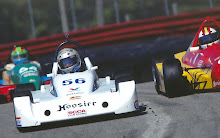
America's Apathy for the Space Program
Dad! Twelve hours of moon landing shows, REALLY? The DVR was full and my daughter needed some recording space for her favorite Disney Channel shows. I tried to explain to her it was the 40th anniversary of the moon landing and the importance and significance of the event. Unfortunately, she simply could not relate to anything I was saying.
How sad! My daughter is 13 years old, a straight A student, and especially strong in science and math. She is the age when students should begin waking up to the bigger world around them and be in awe and wonder of our amazing planet, nature, and mankind’s most amazing triumphs.
When I was 13 the idea of astronauts blasting into space aboard rockets and returning to earth was nothing short of astonishing. Is this a “guy thing”? While young boys may be more interested in this sort of thing, I believe the primary difference between my childhood intrest in space and my daughter’s indifference is societal.
When was the last time you saw the US Space Program in the news? When was the last time you cared to see it in the news? Sadly, when I ask friends these questions, most respond “when the Space Shuttle Columbia burned up over Texas”. This is sad for many reasons. First, the US lost seven of it’s finest astronauts and heroes. Second, the only time the US Space Program makes the news anymore is when something goes wrong, rather than when things go right. Third, the US public has become apathetic towards the program.
I divide the blame for this apathy evenly between the public, the media, and NASA.
The US public has an incredibly short attention span and prefers shallow gossip and dirty laundry stories over scientific achievement news. People like dirty laundry stories (especially about celebrities) because it makes them feel better about themselves. 40 Years ago the entire world watched as Apollo 11 landed on the moon and Neil Armstrong became the first human to step foot on another planet. Among the greatest heroes of all time, in my book, the Apollo 11 astronauts made all Americans feel better about themselves and in fact all humans alive feel better about themselves. They did this through human triumph, not by putting others’ woes and misfortune on public display. This is where the Media has culpability, specifically the “news broadcasters” and TV journalists.
It was ironic that Walter Cronkite died so close to the 40th anniversary of the moon landing, which he considered one of the proudest personal and career moments in his life. Would Cronkite today lead an evening’s news with celebrity scandal updates and football star arrests before squeezing in a brief mention about the Space Shuttle docking with the International Space Station creating the largest gathering of astronauts in space ever? Of course not. Yet this is exactly how today’s media is using their valuable air time to spoon feed the American public mental junk food. The constant battle for ratings and thus advertising dollars has turned our news programs into little more than entertainment and our TV journalists into little more than reality TV stars. Walter Cronkite stuck to the facts, challenged the sources, and relentlessly pursued the truth, every single night! Today’s celebrity anchors stick to the script, challenge the facts, and relentlessly pursue the ratings.
Lastly, NASA has done little since the moon landing to energize the public’s imagination about space. How many Americans even recognize the name Michael Griffin, NASA chief for the past 4 years? Will President Obama’s choice for NASA chief, Charles F. Bolden, be more familiar to the American public?
Scientists and engineers are not known for marketing, selling, or communication skills. So, it’s not surprising that many significant space discoveries over the past forty years have gone almost unnoticed in the general media and public. Additionally, scientists often don’t care for the spotlight or if the general public is aware. It’s often felt the public won’t comprehend the significance of the discovery and thus is not worth the effort. Scientists and engineers tend to derive their satisfaction from the approval of their colleagues, who can fully appreciate the importance of their work.
“PUTTING A MAN ON THE MOON” is a simple and understandable as any space mission has ever been. Not only could the public comprehend it, they could get behind it. Every space mission today is still a building block to bigger achievements in the future. However, exactly which conquest that may be is uncertain due to a divergent scientific community, fluctuating budgets, and unpredictable politics. The US Space program badly needs another clear and bold objective to rally behind and re-capture the public and media’s imagination.
So, how do resolve this situation? Well, it sure would be nice if President Obama would challenge NASA and the American people to put a man on Mars within 10 years! (or another equally compelling goal) However, since this is not likely to happen, what if a NASA or private scientific leader did so and partnered with a media outlet for regular progress updates? A popular web-based media outlet might do the trick and may even have advantages over TV. What if NASA supporters and scientific/engineering companies put their advertising dollars behind such a program by placing banner ads and links to the program on all the “mental junk food” websites? I believe it would start out with a geeky following, but with good marketing, selling, and communicating could gain momentum and exposure at the national and global level. Such an effort could lead Washington, by example, to next big thing in space and recapture the American public’s interest.
Finally, what if Washington doesn’t get behind such efforts in the future? What if private companies and entrepreneurs do instead? Is there money to be made in space? YOU BET! Would this be a good thing or a bad thing? . . . that sounds like a good topic for a follow-up installment!







